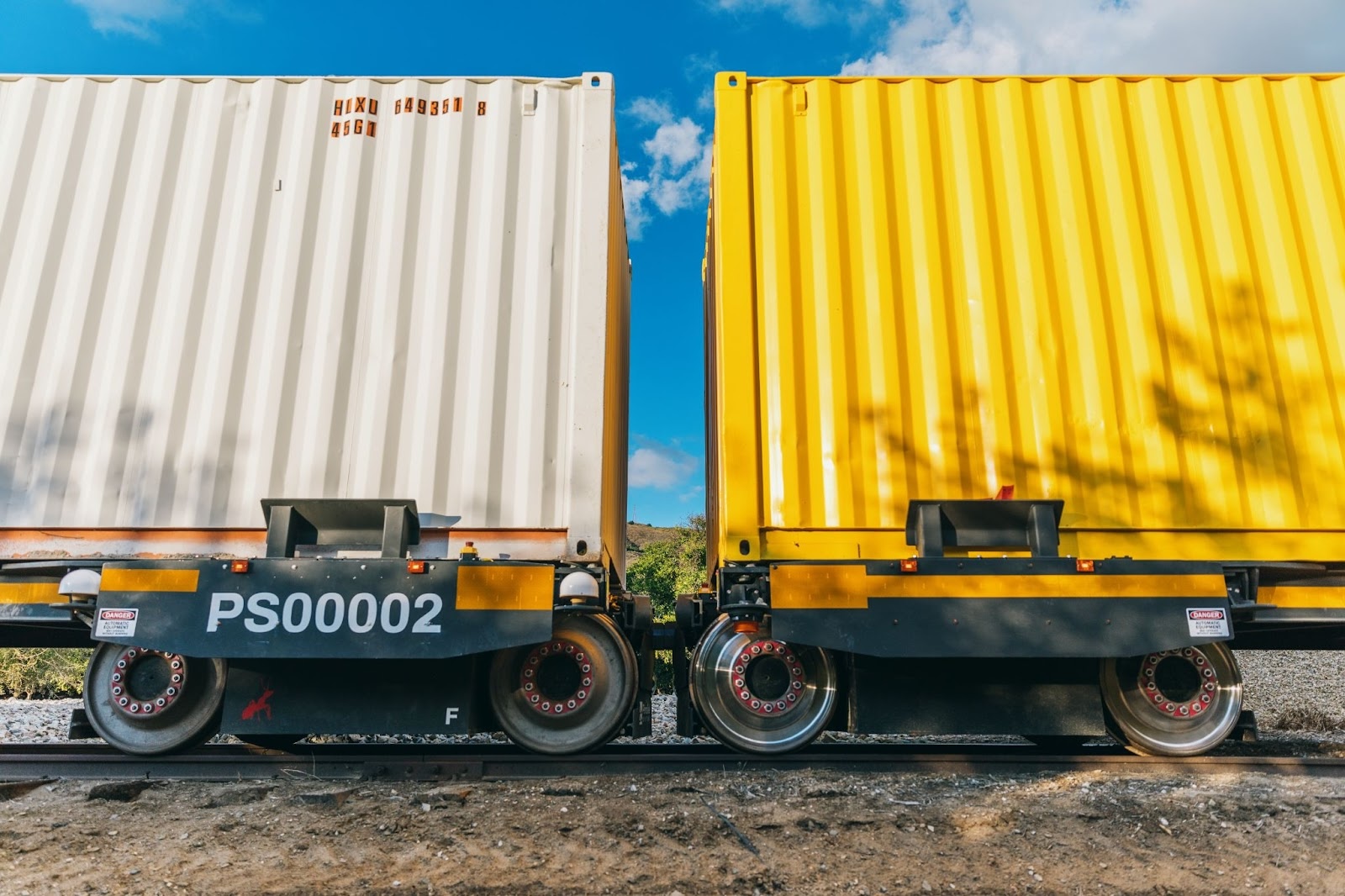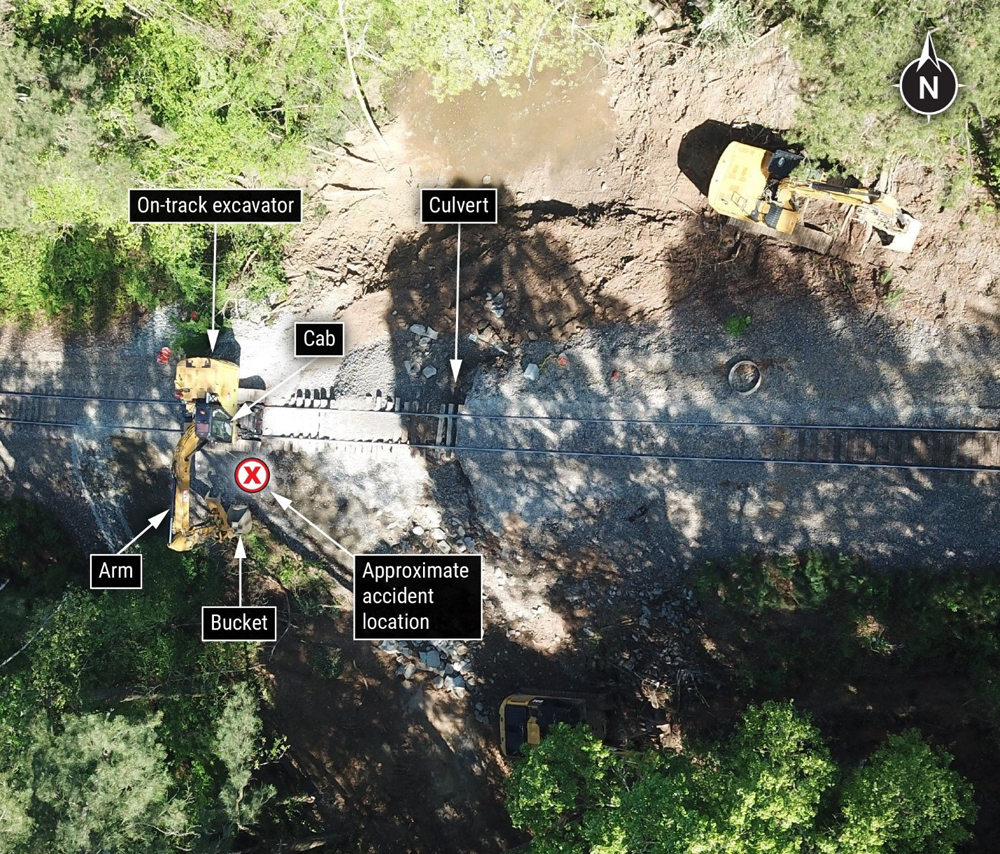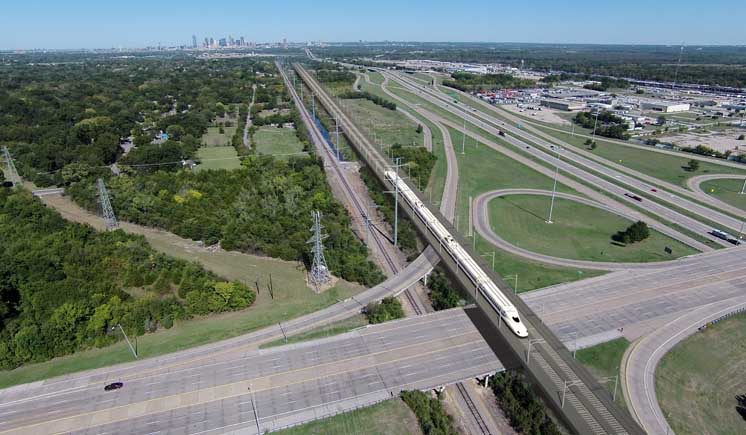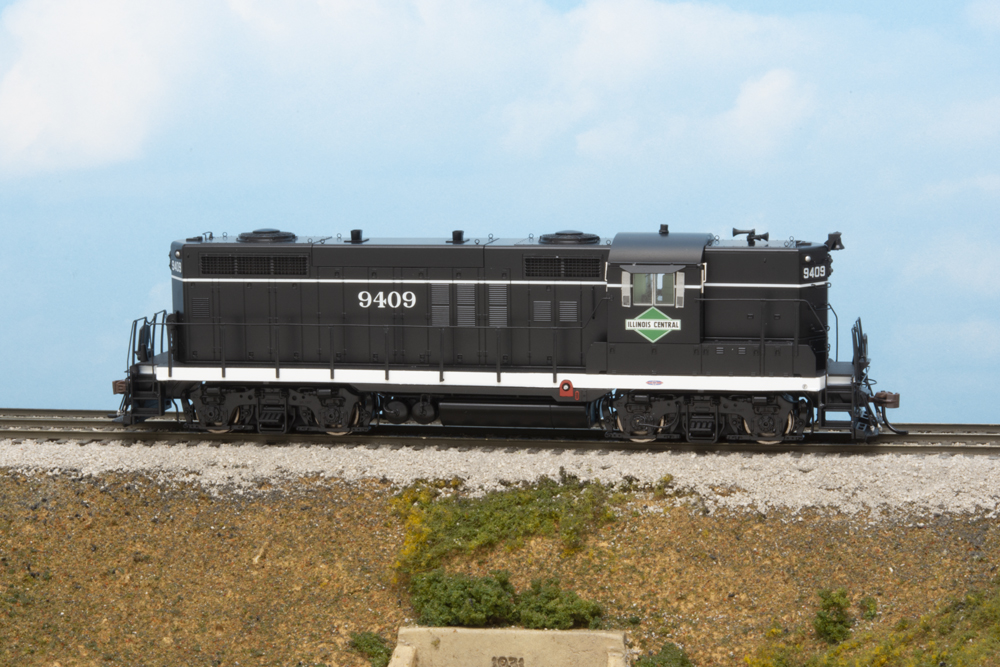
Full-sized railroads loved EMD Geeps and kept ordering them from their initial release in 1949 right into the beginning of the 21st century. Railroads looking for new Geeps in the late 1950s bought GP18s until 1963, and now you can add that model to your layout in HO scale from Athearn Genesis.
The Electro-Motive Division (EMD) of General Motors built the 1,800-hp GP18 from December 1959 through November 1963, constructing 350 locomotives for U.S. railroads, plus 40 more for railroads in Mexico and about a dozen for markets outside North America.
Like preceding models of Geep, the GP18 used EMD’s successful 567 series of diesel engines in non-turbocharged, 16-cylinder form. Two spotting features differentiating GP18s from earlier Geeps are two 48″ radiator fans on the top of the long hood instead of four 36″ fans (a feature shared with late GP9s) and fabricated grills over the radiator openings on the sides of the long hood instead of “chicken wire” grills.
Otherwise, a GP18 looked much like its older brothers, built on the same length frame and riding on the same Blomberg trucks. Low short hoods were an available option, as were dynamic brakes. Grand Trunk Western had GP18s with steam generators.
Missouri Pacific ordered more than twice as many GP18s as any other railroad, 146. The next most prolific buyer was Norfolk & Western, with 48. Ferrocarriles Nacionales de México (the National Railways of Mexico) came in third with 37. Other owners with double-digit rosters include Grand Trunk Western; New York, Chicago & St. Louis (Nickel Plate Road); Norfolk Southern; Chicago, Rock Island & Pacific (Rock Island); Seaboard Air Line; and the Araraquara Ry. (Brazil).
New York, Susquehanna & Western no. 1800 has been photographed as recently as March 2021 as East Penn Ry. no. 1800. Other shortlines also ran GP18s into the 2010s.
The sample model
Our sample model from Athearn is decorated as Illinois Central (IC) no. 9409, one of 29 locomotives numbered 9400-9428 and built under two orders – 15 in 1960 and 14 more in 1963. This is a solid black model with a white stripe along the top of the hood and green diamond IC logo on the cab sides for excitement. The paint is opaque, as is the striping.
The green-and-white IC logo is in register. This locomotive were delivered before the era of warning labels everywhere, so there’s not a lot of reading to do. Detail painting includes EMD builder’s plates, an F in a circle denoting the front of the locomotive, and red highlights around the fuel filler and fuel gauge.
But there are a lot of detail parts. As part of Athearn’s Genesis line, almost everything is a separately applied part. From the top down, there are wire lift rings and grab irons on the roof, along with metal grills on the 48″ radiator fans. A nose-mounted bell sits above the headlight on our IC unit. Photo-etched metal grills cover the radiator shutters on the tops of the long hood sides. Windshield wipers, wind deflectors, and sun shades adorn the cab, which has a detailed interior.
The pilots have see-through footboards, m.u. hoses, uncoupling levers, and wire handrails. The locomotive handrails are flexible plastic molded to scale size. The trucks have separately applied brake cylinders and spring hangers. Sand lines and air lines give the underframe a busy look. Overall dimensions matched drawings in Model Railroader Cyclopedia: Vol. 2, Diesel Locomotives (Kalmbach Books, out of print).
What’s under the hood?
Under the hood is an open-frame, skew-wound motor with brass flywheels mounted to a die-cast metal frame. There’s a separate die-cast metal weight under the short hood. The speaker enclosure is mounted over the rear truck. The SoundTraxx Tsunami2 dual-mode sound decoder in our Digital Command Control (DCC)-equipped model snaps onto a plastic bracket that fit over the motor. All eight wheels pick up current from the tracks and apply tractive effort to the rails through the usual driveshaft to the gear towers on both trucks.
To remove the shell, start with the couplers. Our sample’s frame fit tightly, but I was able to slip a pair of curved tweezers into the coupler openings on the pilots to gently lever the frame down out of the body. Be careful of the headlight wires that tether the body shell to the chassis.
If you wanted to add engineer and/or fireman figures to the cab, it might be easier to slip them in through the opening cab windows, as the handrails were securely mounted to the cab sides. I was able to carefully push on the cab mounting tabs inside the long and short hoods, then use the same curved tweezers to lift the cab free. The included exploded-view drawings are helpful for figuring out how to disassemble the model if need be.
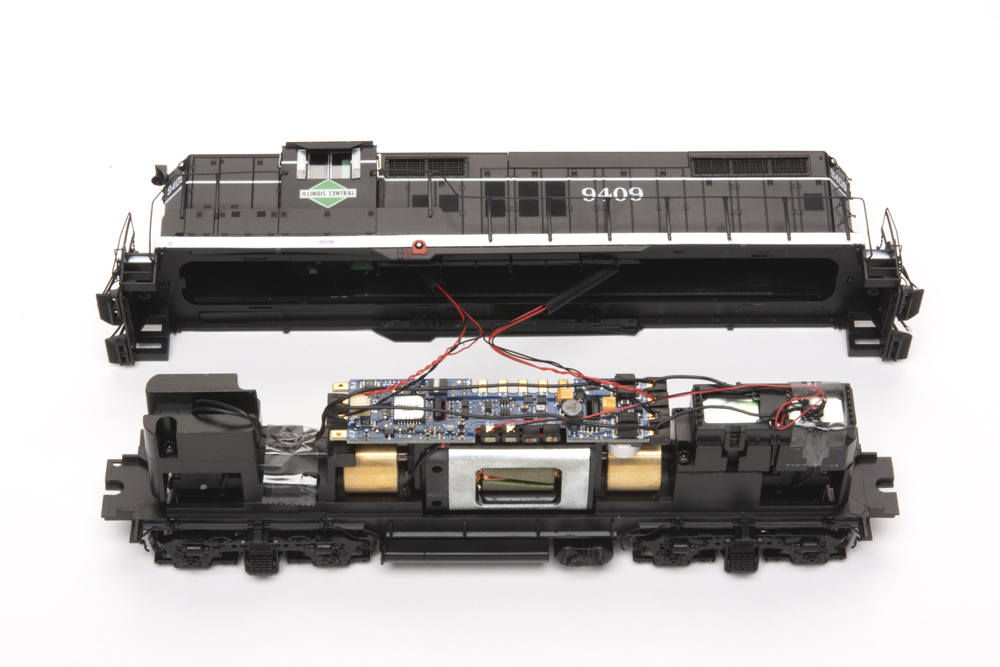
Testing the locomotive
On the test track, I found sounds started with 6.5V of DC power from a power pack. The locomotive started moving at 1 scale mph at 9V, and topped out at 57 scale mph at 14V, the most our test power pack puts out.
Sounds were automatic on DC power, and the headlight was directional. If I flipped the direction switch while the locomotive was still moving, I could keep the sound from dropping and restarting, which wasn’t the case if
I stopped the locomotive.
Of course, in DCC the SoundTraxx-equipped locomotive performed much better. In speed step 1, the locomotive rolled at 3.9 scale mph using our standard 28-step testing. I checked configuration variable (CV) 2, which sets the starting voltage, but it was already set to 0. I tested again in 128 speed steps and found the locomotive moved at just over 1 scale mph in speed step 1. In speed step 28, the locomotive reached a top speed of 77 scale mph, within the range of road-switcher locomotives.
The Athearn GP18 has the full suite of SoundTraxx Tsunami2 features. Multiple sounds are available, as is fine-tuning of control features. However, a program such as the free downloadable Java Model Railroad Interface (JMRI) DecoderPro, available at jmri.org, might be required to access all of them.
Our Athearn GP18 weighed 11.6 ounces and produced 2.72 ounces of drawbar pull, equivalent to 38 freight cars on straight and level track. On our staff layout, the Milwaukee, Racine & Troy, the GP18 pulled 12 50-foot boxcars cars up the 3 percent curving grade from Williams Bay Junction to the high bridge at Winter Hill.
I also tested the locomotive on my home switching layout, where it performed well moving cars through the layout’s Atlas no. 4 and no. 6 turnouts.
GP18s were among the last of the classic-looking Geeps, so if you want these iconic locomotives, but model a later era than the popular steam-to-diesel transition era, these are the Geeps you might want. Athearn’s highly detailed and great operating models would be the place to start. Now, if only they came in Cornell Red…
Facts & features
Price: $299.98 (DCC and sound), $209.98 (DC, no sound)
Manufacturer
Athearn Trains
2904 Research Rd.
Champaign, IL 61822
athearn.com
Era: 1960-1985 (as decorated)
Road names: Illinois Central, Baltimore & Ohio (one road number), Burlington Northern, Nickle Plate Road, Norfolk & Western, and Northern Pacific. Four road numbers per scheme unless noted.
Features
• 21-pin NEM connector (direct current models only)
• All-wheel drive and electrical pickup
• Bi-directional constant light-emitting diode lighting
• Blomberg-B trucks with appropriate bearing caps
• Body-mounted McHenry operating scale knuckle couplers, at correct height
• Detailed fuel tank
• Die-cast metal frame
• Etched metal radiator intake grills and fan grills
• Genesis driveline with 5-pole skewwound motor and machined flywheels
• Plastic handrails
• Positionable cab windows and detailed cab interior
• MU stands
• Nub-style walkway tread
• RP-25 contour wheels, in gauge
• Separate, factory-applied lift rings, sand lines, uncoupling levers, and windshield wipers
• Speed recorder if prototype-appropriate
• Trainline and m.u. hoses
• Wire grab irons
• Weight: 11.6 ounces







